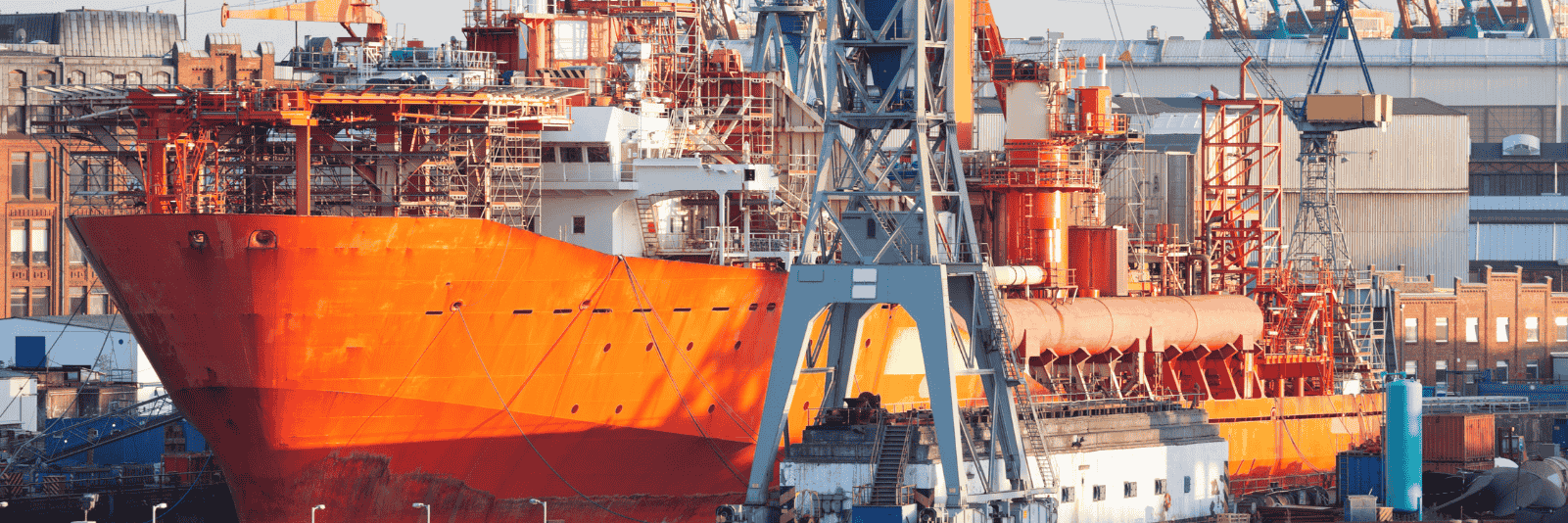Maintenance, Repair, and Overhaul (MRO) in the maritime industry covers all activities that keep vessels safe and running. It includes routine upkeep (like engine checks, cleaning, and lubrication) and unplanned repairs (fixing broken parts), up to full overhauls where systems are disassembled and rebuilt. In practice, MRO on ships involves everything from hull inspections and electrical system repairs to major engine rebuilds. Because of this complexity, accurately estimating an MRO project’s costs is challenging. Below, we break down the top 10 cost factors in shipyard MRO and group them by five standard cost categories (direct, indirect, fixed, variable, sunk) to show where most dollars go.
Top Cost Drivers and Project Cost Categories
In project management, costs are generally classified as fixed, variable, direct, indirect, and sunk. Direct costs are expenses tied to specific work (like labor and materials), indirect costs are overhead and support, fixed costs don’t vary with work volume (e.g. equipment rentals or fees), variable costs change with scope (e.g. fuel or consumables), and sunk costs are past expenditures (not usually included in new estimates). We’ll organize the top MRO cost drivers under these categories:
- Direct Costs: The biggest slices of an MRO budget are usually labor and materials. Skilled labor, certified welders, machinists, electricians and engineers, is the single largest expense in ship repairs. Repair yards often find labor dominates the bill (unlike new construction, where materials can dominate). Equally important are materials and spare parts. Marine components (engines, pumps, electronics) are often low-volume and high-quality, so parts are expensive. Overhauls may also require heavy equipment and tooling (e.g. cranes, dry anchors, lifting scaffolds), which adds to costs. Finally, specialized tasks are often subcontracted (for example, hull blasting/painting or non-destructive testing), and those subcontractor fees flow directly into the estimate. In short, direct costs in maritime MRO include wages for crews and technicians, new components and materials, equipment rentals, and any specialist subcontracted services.
- Indirect Costs: Beyond direct tasks, overhead and support inflate every project. This category covers project management hours, office staff, safety oversight, utilities at the dock, and company‐wide overhead. For example, even if welders are working on repairs, the shop foreman’s salary or yard utilities are indirect to that job. Indirect costs also include things like insurance, permits, and administrative fees.
- Fixed Costs: Certain costs are fixed for the duration of the project. Chief among these on a dry dock job are the dock or berth rental fees and basic services. Dockyards charge per day or per block-use in a dry berth, and these rates don’t change with project details. Similarly, fixed costs include basic utilities (e.g. minimal shore power, basic security) and insurance/permit fees that the contractor must pay once, regardless of workload.
- Variable Costs: Other expenses scale with the work’s size or duration. For example, fuel and consumables (oils, greases, grinding discs, welding rods, cleaning solvents, etc.) will be used up in proportion to the repair scope. If the work runs longer or requires extra effort, these costs rise.
- Contingency Costs: Ship repairs often uncover hidden defects (corrosion, cracked parts, etc.), so budgets include a variable contingency. This covers ad hoc tasks or extra materials when unexpected issues appear.
- Sunk Costs: A sunk cost is an expense that has already been incurred and cannot be recovered, regardless of future actions. Since it cannot be changed or refunded, rational decision-making says sunk costs should not influence ongoing or future project decisions
| Project Cost Category | Top Ship-Based MRO Cost Factors |
| Direct Costs | • Skilled labor (e.g., welders, engineers) • Parts & materials (spares, components) • Equipment & tooling rentals (cranes, scaffolding) • Subcontracted services (e.g., NDT, blasting, painting) |
| Indirect Costs | • Overhead & administration (project management, office support, safety oversight) • Logistics & transportation (shipping parts, crew movement) |
| Fixed Stock | • Dockage / berth rental fees • Downtime opportunity costs (lost revenue while the ship is idle) |
| Variable Costs | • Consumables (fuel, welding rods, solvents, cleaning supplies) • Overtime/additional shifts • Contingency for unforeseen repairs |
| Sunk Costs | • Previously incurred expenses (e.g., prior surveys or assessments) – not used in fresh estimate |
Putting it all together, the top 10 cost drivers in ship-based MRO are: skilled labor, parts/materials, equipment rental, subcontractor services (all direct); overhead/admin and transportation/logistics (indirect); dockage and downtime (fixed); and consumables and contingency work (variable). These factors account for virtually the entire budget of a repair project.
Estimating Challenges for MRO Contractors
Estimating a ship repair job is notoriously difficult. Ships are complex, specialized machines; many are aging and each has a unique history. First, uncertainty reigns: the full scope of work (e.g. hidden corrosion or system failures) may only become clear during the job. Contractors must assume contingencies without overpricing. Second, supply chain issues make estimating hard. Parts availability is a major headache – missing a needed part can delay a project by weeks and blow up labor costs. Material and energy price inflation also adds unpredictability.
Third, regulatory complexity increases hidden costs. Maritime MRO must meet strict rules (IMO, SOLAS, class society regulations, environmental standards, etc.). Contractors have to budget for required inspections, certifications, and often costly waste-handling or safety measures. Missing a compliance requirement can mean rework or fines, so these hidden costs are hard to nail down but essential to include.
Finally, workflow and tools are a big pain point. Many shops still rely on spreadsheets, emails and legacy ERP modules to build bids. This leads to errors, omissions and inconsistency. Manually typing numbers into Excel opens the door to simple mistakes, and it’s very hard to capture an estimator’s hard-won experience. If the senior estimator retires, that knowledge walks away. In short, unintegrated processes – scattered data, no collaboration – mean extra work to gather rates from different departments, and a high risk of costly mistakes
How OAE Helps Maritime Contractors
OAE is a cloud-based estimation platform designed for exactly these complexities. It enables teams to build better bids faster by addressing the pain points above. For example, OAE lets senior estimators capture their knowledge in standardized templates and libraries. This allows organizations to streamline their proposal process, and all labor rates, materials, and workflows are stored in a consistent way so junior team members can use them and so nothing falls through the cracks.
Because OAE is built for variable, complex projects like ship MRO, it handles multi-year projects and change orders easily (e.g. if an overhaul takes longer than planned). It also secures sensitive data: access is permission-based, and subcontractors can only enter the pieces you allow, protecting your price book
OAE’s specialized estimation platform addresses all of these, letting MRO contractors capture their expert knowledge, collaborate in real time, and produce precise, reliable quotes. This means fewer costly surprises and higher win rates on competitive shipyard projects.

